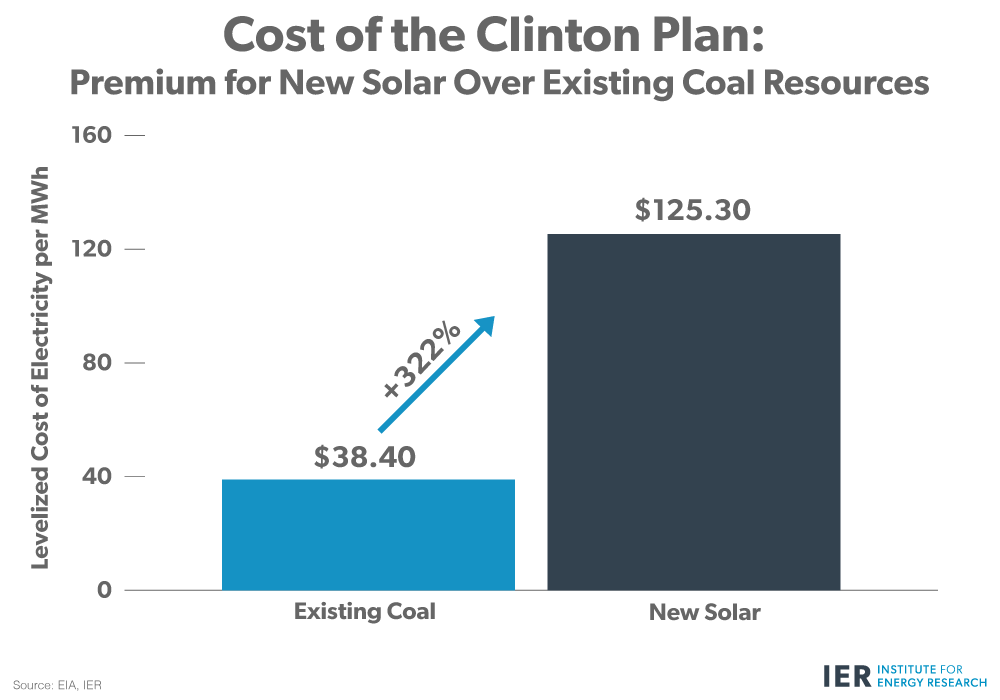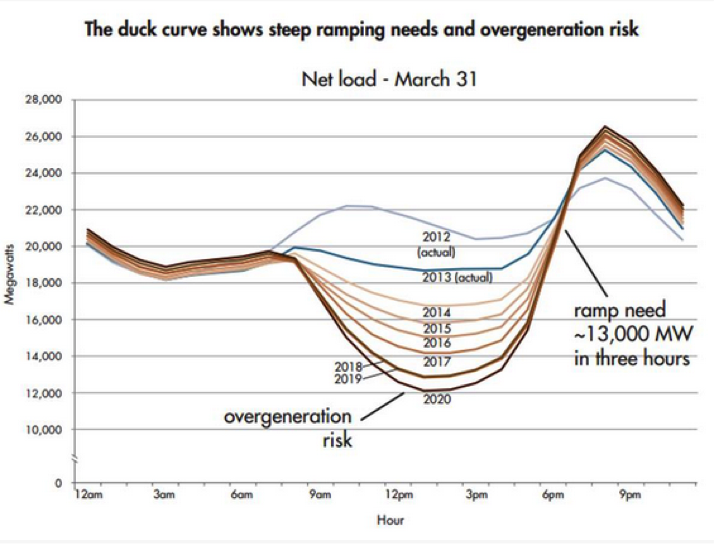Clinton’s Anti-Energy Pledge Would Make Electricity Rates Skyrocket

Hillary Clinton recently proposed a “comprehensive energy and climate agenda,” which includes increasing installed solar capacity to 140 gigawatts (GW) by 2020. She claims this would be achieved by installing 500 million more solar panels across the country, and doing so would increase the current solar capacity by 700 percent: a 32 percent annual growth rate.
Installing 140 GW of solar panels is unwise for three reasons: 1) electricity from new solar panels is significantly more expensive than electricity from existing resources, 2) new solar panels are one of the highest-cost sources of new electricity generation, and 3) at high penetration levels, solar panels disrupt the reliable functioning of the power grid.
Putting a Price on Clinton’s Solar Pledge
The Energy Information Administration (EIA) publishes estimates of the levelized cost of electricity (LCOE) from new resources, which takes into account the capital and operating costs of new power plants over their operating lives. EIA estimates that electricity from a new solar photovoltaic (PV) system will cost $125.3 per megawatt hour (MWh) in 2020. By contrast, we calculated in a recent paper that electricity generated from existing coal plants costs $38.40/MWh, on average, while electricity from existing nuclear plants costs $29.60/MWh.
Clinton’s plan would lead to the closure of existing coal plants and the building of new solar PV that are 322 percent more expensive. Compared to existing nuclear plants, new solar is 417 percent more costly. In both cases, electricity costs would necessarily skyrocket with any appreciable increase in solar power. Certainly at the levels Clinton is proposing, the cost associated with increasing solar penetration would be a significant burden on American families.
Going All-In on Solar Power is Bad Policy
Clinton’s plan would dramatically increase the cost of electricity by building high-cost and unreliable (i.e. non-dispatchable) sources of electricity generation—such as solar—that do not reduce the need for other generation resources. Solar power cannot completely replace reliable natural gas, coal, or nuclear plants because solar cannot be counted on to produce electricity when it is needed.
As the chart below shows, increased generation from solar panels creates a dangerous situation for grid operators—solar generation falls off sharply in the afternoon, just as system demand is peaking, causing dispatchable sources of generation to ramp up and make up the difference. Under Clinton’s plan, this pattern would be an everyday occurrence.
Source: http://www.utilitydive.com/news/the-epic-fail-on-solars-doorstepand-how-the-grid-can-help/324411/
Solar panels can only be built in addition to reliable sources, not to replace them. As a result, solar power can reduce the fuel costs of some natural gas plants—for example, by reducing the amount these plants operate when the sun is shining. However, solar panels do not replace natural gas plants or reduce the need for reliable plants at times of peak demand. This means that solar cannot reduce the overall capital costs of the reliable generation system, and only increases the overall capital cost of the generation system when the cost of solar panels is considered.
Not only does solar increase capital costs, but subsidized solar power has a parasitic effect on low-cost baseload power plants. Adding a large amount of subsidized solar adversely affects the economics of baseload power plants and this means low-cost, reliable electricity generation resources will be shut down.
On a more abstract level, Clinton’s plan represents a shift backwards—Americans need more energy, not less, and we need the most effective and lowest cost sources. Clinton’s plan would promote expensive, unreliable energy sources and shut down our most affordable and reliable sources. Rather than giving us an energy plan, Clinton has given us a new blueprint for making electricity prices skyrocket.
Conclusion
Hillary Clinton’s plan to increase installed solar capacity by 700 percent by 2020 is uneconomic and would burden Americans with significantly higher electricity costs: new solar is 322 percent more costly than existing coal resources and 417 percent more expensive than existing nuclear. The only way to achieve Clinton’s goal would be through spending billions of dollars on subsidies such as the solar Investment Tax Credit and enforcing strict environmental regulations aimed at shutting down coal plants, including the administration’s plan to regulate carbon dioxide emissions from existing power plants—both of which Clinton supports.






